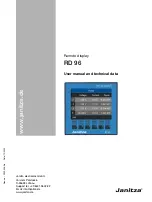
toward the arm bar, must be rotated in the direction of increasing spring
torque and forced against the flat surface between the actuating pawl shaft
holes.
14. After aligning the holes in the arm and the pawl, start the threaded end of the
actuating pawl shaft (50-3-9) through the aligned holes. Carefully force the pin
out of the actuating pawl spring with the actuating pawl shaft. Ease the spring
onto the shaft as it is advanced. Some models have a spacer between the
actuating pawl and the actuating arms.
15. Securely tighten the actuating pawl shaft.
16. Rotate the actuating pawl in the direction of increasing spring tension until it
reaches a stop. Using flexible wire, fasten the actuating pawl to the actuating
arm cross head.
17. Slide the actuating arms between the frame legs. The straight edge of the
arm will be up.
18. Start the wheel shaft (50-3-18) through the frame leg from the right. Align the
right actuating arm and advance the shaft through the arm and halfway
across the space between frame legs.
19. Slide the wheels onto the shaft in the original order, advancing the shaft when
necessary. Make sure to remove any burrs on the wheels or actuating arms.
Use a medium India stone to remove burrs.
CAUTION:
the actuating arms
are chrome plated and should not be stoned more than is necessary. The
indent side of the wheels goes on the right.
20. The wheel shaft ends should be flush with the frame sides. Align the flats on
the shaft with the set screws (50-3-20) in the frame legs. Securely tighten the
set screws.
21. Turn the frame over with the retaining pawl block mill cut facing up and the
frame legs toward the operator. If the retaining pawl block is in place skip
instructions 22 through 24.
22. Slide the retaining pawls (50-3-21) onto the retaining pawl shaft (50-3-22) in
their original order. The working end of the unit wheel pawl is wider than the
other pawls and must be placed in the proper position.
23. Rest the retaining pawl block with the milled cut facing up and toward the
operator. Rest the retaining pawls with the shaft next to the milled cut and the
flat pawl ends up and toward the operator.
24. Mate the retaining pawls with their respective slots. Position the shaft in the
milled cut with its end flush with the pawl block ends.
Revision # 2.0

































